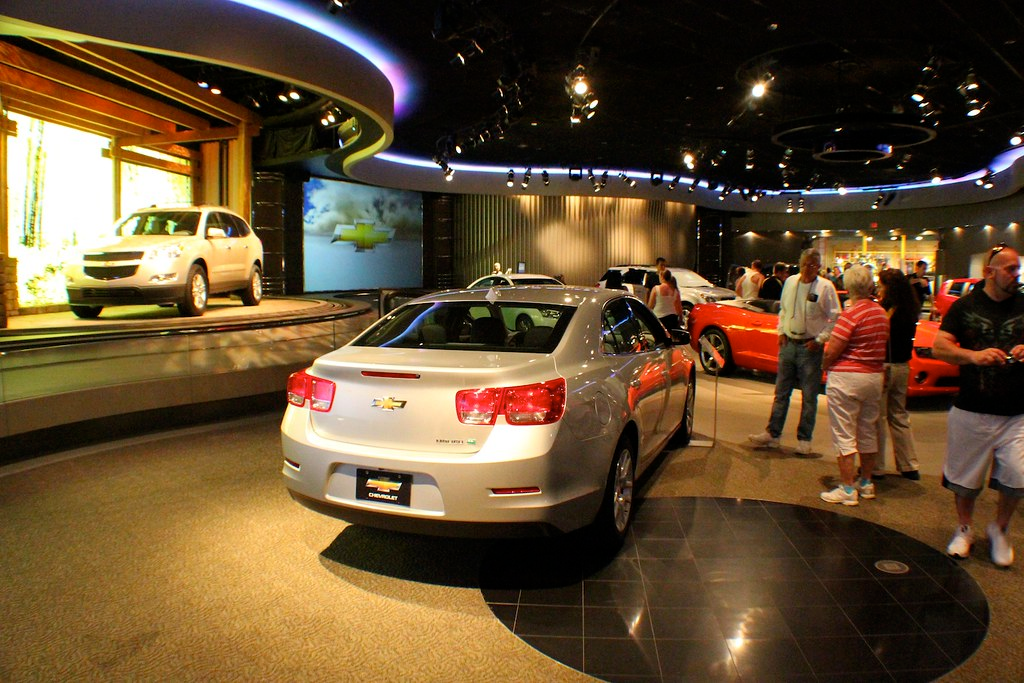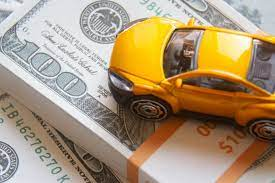Are you considering purchasing a car and weighing the pros and cons of paying cash? You’ve come to the right place. In this comprehensive guide, we delve into the world of cash car purchases, exploring the advantages, drawbacks, and alternative options. By the end, you’ll be well-equipped with the knowledge needed to make an informed decision about “how much cash for car” is the right choice for you.
Key Takeaways
- Assess financial situation and set realistic budget when determining cash amount for car.
- Consider advantages of paying cash to gain increased negotiating power, eliminate interest payments and immediate ownership.
- Alternatives include auto loans or leasing with restrictions on mileage & wear-and tear.
Determining the Cash Amount for Your Car
Before shopping for your dream car, you must first establish the amount of cash you can afford to part with. This process involves assessing your financial situation, setting a realistic budget, and choosing the right vehicle that meets both your needs and budget constraints.
Analyzing your personal finance and setting a clear budget can help you prevent overspending and keep you on the path to achieving your financial goals.
Assess Your Financial Situation
Begin by evaluating your income, expenses, and existing debt to determine how much cash you can allocate for a car purchase. This will help you understand your current financial situation and identify areas where you may need to adjust your spending or increase your savings in order to afford the vehicle you desire.
Be sure to take into account any trade-in value of your current car and other financial commitments when calculating your budget.
Set a Realistic Budget
To create a budget for your car purchase, consider guidelines such as the 20/4/10 rule, which suggests that transportation expenses should not exceed 10% of your income. Additionally, the 50/30/20 rule is a useful guideline for constructing a budget, where 50% of your take-home pay is allocated to needs, 30% to wants, and 20% to savings and long-term goals. When devising your budget, don’t forget to factor in additional costs such as taxes, fees, insurance, and maintenance costs to determine how much car you can afford.
Creating a realistic budget offers a clear perspective on what you can afford to spend on a car, providing you with better control over your finances and avoiding potential debt. Remember that it’s always better to err on the side of caution and budget conservatively, ensuring that you can comfortably afford the car without sacrificing other financial goals.
Choose the Right Vehicle
Once you have a firm grasp on your budget, it’s time to choose the right vehicle that fits within your price range and meets your needs. Factors such as fuel efficiency, maintenance costs, and depreciation should be taken into account when selecting a car.
A thorough research on various car models, prices, and features, including hybrid car options, will enable you to find a vehicle that balances affordability and functionality, making your investment worthwhile, even if it’s not an expensive car.
Advantages of Paying Cash for a Car

Paying cash for a car comes with several notable benefits that can make it an attractive option for many buyers. These advantages include no interest payments, increased negotiating power, and full ownership from day one.
Examining each of these benefits in detail can help us understand why paying cash for a car can be a financially wise decision.
No Interest Payments
One of the most significant advantages of paying cash for a car is the elimination of interest payments. By not taking out a car loan, you save money on interest, reducing the total loan interest paid, and increasing your overall financial flexibility.
This can result in substantial savings over time, allowing you to allocate those funds towards other financial goals or simply enjoy a more comfortable lifestyle with an increased annual income.
Increased Negotiating Power
Another benefit of paying cash for a car is the increased negotiating power it provides. Dealerships are often more willing to negotiate with cash buyers, as they receive the full payment immediately and don’t need to rely on financing. This enables you to potentially secure a lower price for the car and save even more money. Remember to research and gather market data to back up your offer, demonstrating your knowledge of the car’s fair market value and increasing your chances of securing a favorable deal.
Full Ownership from Day One
When you pay cash for a car, you own it outright from the moment you drive off the lot. This means no lienholder and no risk of repossession due to missed loan payments.
Full ownership also grants you the freedom to sell or trade the car at any time, without worrying about satisfying a loan balance or dealing with the complexities of transferring a loan to a new owner.
Disadvantages of Paying Cash for a Car
Despite the numerous advantages, there are also some drawbacks to paying cash for a car. These include tying up a significant portion of your savings and potentially missing out on attractive financing incentives.
Before making a decision, it’s important to balance these disadvantages with the benefits of a cash purchase, considering the purchase price.
Tying Up Funds

Paying cash for a car can tie up a significant amount of your savings, potentially limiting your ability to invest or handle emergencies. This can impact your overall financial flexibility, making it more challenging to allocate funds to diverse financial goals. It’s crucial to strike a balance between saving for a car and maintaining a healthy emergency fund or access to credit to effectively manage unforeseen circumstances.
Missed Financing Incentives
Cash buyers may miss out on attractive financing deals, such as low-interest rates or cashback offers, which are sometimes available to those who finance their car purchases. While the benefits of paying cash often outweigh these potential incentives, it’s still essential to consider the full range of financing options available and ensure that you’re making the most informed decision for your financial situation.
Tips for Saving Cash to Buy a Car
Having understood the pros and cons of paying cash for a car, we can now delve into some practical strategies for saving up for a car purchase. These tips include creating a savings plan, prioritizing expenses, and considering a side hustle to boost your savings.
Create a Savings Plan
Develop a plan to save money for your car purchase, setting aside a specific amount each month. This can be achieved by following guidelines like the 20/4/10 rule or the 50/30/20 rule, which help you determine how much to save based on your income and financial goals.
Be sure to create a separate savings account specifically for your car fund to prevent the money from being spent on other items. Automate your savings by setting up automatic transfers from your paycheck to your car savings account, ensuring consistent saving without the temptation to spend the money elsewhere.
Prioritize Your Expenses
Cut back on non-essential expenses to save more money for your car purchase. This may include dining out less frequently, canceling unnecessary subscriptions, or reducing your entertainment budget. By focusing on essential expenses and eliminating unnecessary spending, you can allocate more funds towards your car savings and reach your goal more quickly.
Consider a Side Hustle
Explore additional income sources, such as freelance work or a part-time job, to boost your savings for your car purchase. Side hustles can provide supplementary income, enabling you to save more money and reach your goal in a timelier manner.
Consider options that fit your skills, interests, and schedule to ensure that your side hustle is both enjoyable and profitable.
Purchasing a Car with Cash: The Process

After accumulating sufficient cash for your car purchase, you can proceed to the process of buying a car with cash. This involves researching and comparing vehicles, negotiating the best deal, and completing the payment and paperwork.
Research and Compare Vehicles
Start by investigating different car models, prices, and features to find the best fit for your budget and needs. Utilize online tools, such as car comparison websites, to help you gather information about various vehicles and identify the fairest market value for the car you’re interested in. By conducting thorough research, you’re more likely to find a vehicle that strikes the perfect balance between affordability and functionality.
Negotiate the Best Deal
Use your cash-buyer status to negotiate a lower price for the car, backing up your offer with research and market data. Start with a lower offer and be willing to negotiate upwards if the seller makes a counteroffer.
Remember to negotiate the final price before disclosing that the payment will be made in cash – this can provide you with additional leverage during the negotiation process.
Complete the Payment and Paperwork
Finalize the car purchase at the car dealership by making the payment, signing the necessary documents, and obtaining insurance coverage. Depending on the dealership’s requirements, you may be able to make the payment using physical cash, a cashier’s check, a personal check, or a wire transfer.
Be sure to review and understand all the paperwork before signing, and don’t forget to secure car insurance coverage for your brand new car, also referred to as a new vehicle.
Alternatives to Paying Cash for a Car
Although paying cash for a car offers certain advantages, considering alternative options is equally significant. These may include auto loans and leasing.
By exploring car dealerships and their alternatives, you can make a more informed decision about the best way to finance your car purchase.
Auto Loans
Auto loans are a popular alternative to paying cash for a car. They allow you to finance your car purchase over a set period, making monthly payments that include interest. While an auto loan can be convenient, it often comes with higher overall costs due to interest payments and other fees, especially when compared to the same car payment made in cash.
If you have a good credit score, you may be eligible for competitive interest rates on auto loans, making this option more affordable.
Leasing
Leasing is another option to consider when looking for alternatives to paying cash for a car. With leasing, you make a monthly payment for a fixed term, typically 24 to 48 months, and return the car at the end of the lease. This option can be attractive if you prefer driving a new car every few years and don’t want to deal with the long-term commitment of owning a vehicle.
However, leasing may not be cost-effective in the long run and often comes with mileage and wear-and-tear restrictions.
Summary
In conclusion, paying cash for a car can offer several advantages, such as no interest payments, increased negotiating power, and full ownership from day one. However, it’s essential to consider the potential drawbacks, such as tying up funds and missing out on financing incentives. By carefully determining the cash amount you can afford, creating a savings plan, and exploring alternative financing options, you can make the best decision for your financial situation when purchasing a car. Remember, the key is to weigh the pros and cons and choose the option that best aligns with your financial goals and lifestyle.
Frequently Asked Questions
How much cash should I have to buy a car?
When buying a car, aim to spend no more than 10% of your take-home pay on the payment and 15-20% overall. To make a 20% down payment for a new car that costs $25,000, you should save $5,000 in cash.
Is $500 a month too much for a car?
Based on the general rule of thumb that car payments should not exceed 20% of your take-home pay, $500 a month for a car would likely be too much. Considering insurance costs and other car-related expenses, it would be best to aim for a payment of $600 or less.
How much should I spend on a car if I make $60000?
When car buying, it’s advisable to limit spending to 35% of your annual income; thus, a $60k salary should not exceed $21,000. Alternatively, you can spend no more than 15% of your monthly take-home pay – in this case, $750 per month.
What factors should I consider when determining how much cash I can afford to spend on a car?
When determining how much cash to spend on a car, consider your income, savings, trade-in value, and overall budget for maintenance and car payments.
How can I create a savings plan for my car purchase?
Set aside a specific amount to save each month, such as following the 20/4/10 or 50/30/20 rules, and automate your savings by setting up automatic transfers from your paycheck into a car-specific savings account. This will help you develop a realistic and consistent savings plan towards your car purchase.





 Who We Are
Who We Are Coverage Area
Coverage Area Donate
Donate